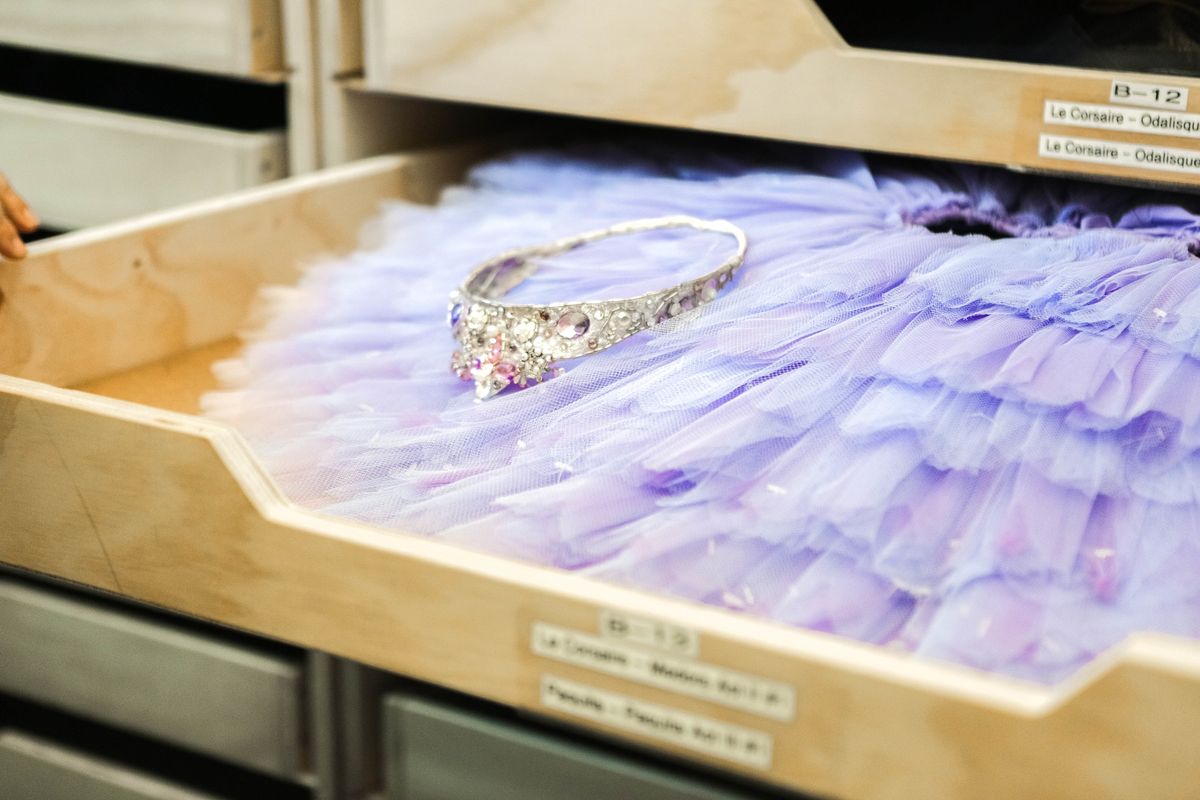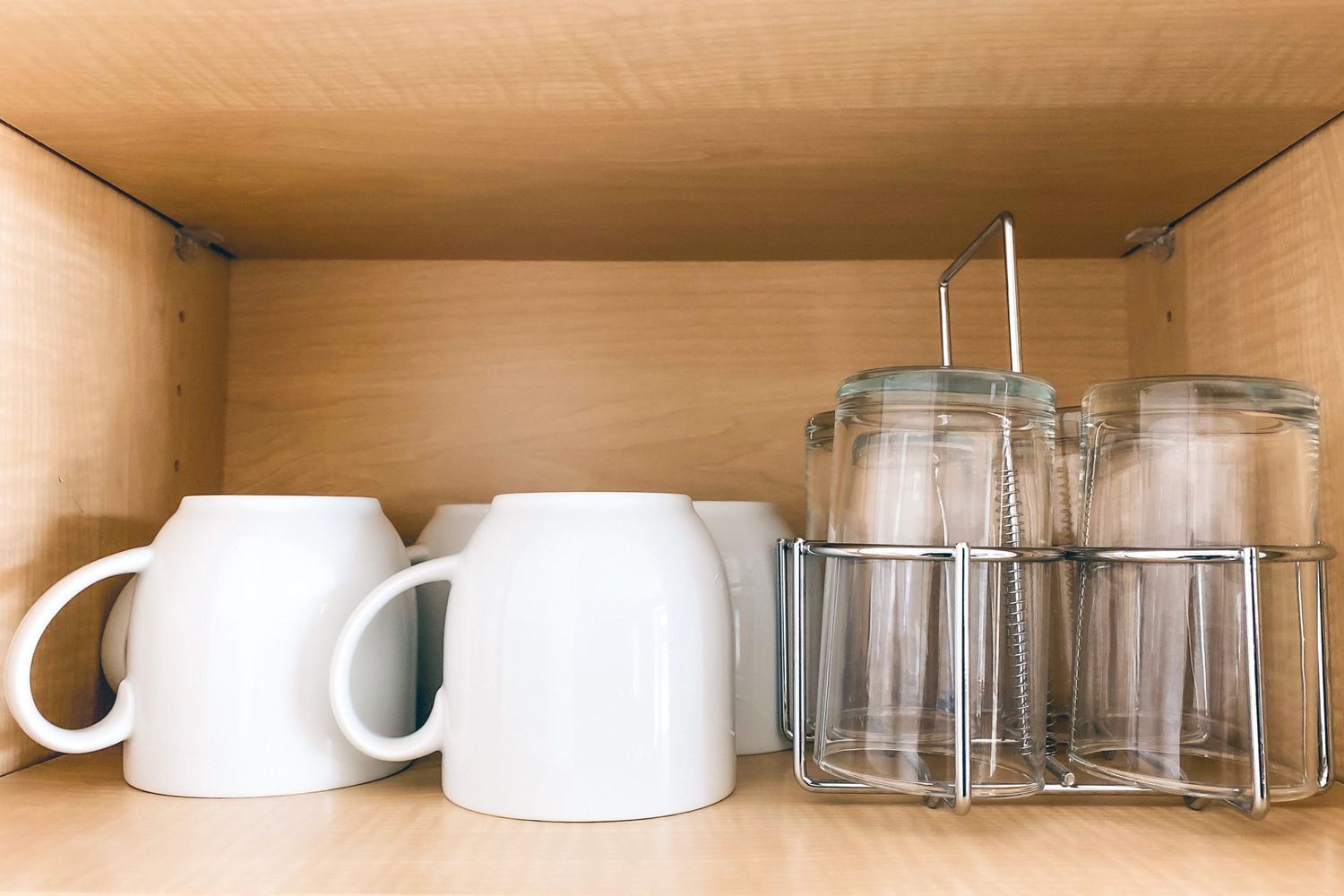

Articles
How To Store Natto
Modified: December 7, 2023
Learn how to store natto properly with our informative articles. Find expert tips and techniques for preserving the taste and texture of this traditional Japanese dish.
(Many of the links in this article redirect to a specific reviewed product. Your purchase of these products through affiliate links helps to generate commission for Storables.com, at no extra cost. Learn more)
Introduction
Welcome to this comprehensive guide on how to store natto. Natto is a traditional Japanese dish made from fermented soybeans that has gained popularity worldwide due to its unique flavor and numerous health benefits. It is rich in probiotics, protein, and vitamins, making it a popular choice among health-conscious individuals. However, to fully enjoy the flavors and reap the benefits of natto, proper storage is essential.
When it comes to storing natto, there are a few key factors to consider, such as temperature, moisture, air exposure, and duration. The goal is to maintain the freshness, texture, and taste of this delicacy for as long as possible.
In this article, we will delve into the importance of proper storage for natto and provide you with a step-by-step guide on how to store it to ensure its longevity. Additionally, we will share some useful tips for extending the shelf life of natto, allowing you to enjoy it for an extended period.
So, whether you are a dedicated fan of natto or just starting your culinary journey with this beloved Japanese dish, let’s dive into the world of natto storage and discover the secrets to keeping it in its best condition!
Key Takeaways:
- Proper storage of natto is crucial to maintain its unique flavor, texture, and nutritional benefits. By controlling factors like temperature, moisture, and air exposure, you can extend its shelf life and enjoy it for longer.
- Freezing, portion control, and proper handling are key to extending the shelf life of natto. These techniques help preserve its quality and reduce waste, allowing you to savor this Japanese delicacy with confidence.
Read more: How To Store Basil From Store
What is Natto
Natto is a traditional Japanese dish that is made by fermenting soybeans with the help of a specific strain of bacteria called Bacillus subtilis var. natto. This fermentation process gives natto its distinct flavor, aroma, and texture.
Originating in Japan centuries ago, natto has become a staple in Japanese cuisine and is enjoyed for its unique taste and numerous health benefits. It has a sticky and slimy texture with a strong, pungent smell, which can be an acquired taste for some, but is highly prized by others.
One of the reasons that natto has gained popularity around the world is its impressive nutritional profile. It is packed with essential nutrients, including protein, fiber, vitamins, and minerals. It is an excellent source of vitamin K2, which plays a crucial role in bone health and blood clotting.
Another standout feature of natto is its probiotic content. During the fermentation process, the bacteria produce enzymes that enhance the bioavailability of nutrients and promote a healthy balance of gut bacteria. This can have a positive impact on digestion, immune function, and overall gut health.
In addition to its nutritional benefits, natto is also known for its potential cardiovascular advantages. Studies have suggested that the active compound called nattokinase found in natto might help to reduce blood clotting, lower blood pressure, and improve overall heart health.
Natto can be enjoyed in various ways, including as a topping for rice, in sushi rolls, or even as a standalone dish. Its versatility and unique taste make it a favorite among both traditional Japanese cuisine enthusiasts and health-conscious individuals looking to add a nutrient-dense option to their diet.
Now that we have a better understanding of what natto is and its many benefits, let’s explore why proper storage is crucial to maintain its quality and prolong its shelf life.
Why is Proper Storage Important
Proper storage is essential for preserving the quality, flavor, and nutritional benefits of natto. Failing to store natto correctly can lead to spoilage, loss of texture, and deterioration in taste, ultimately rendering it unappetizing and potentially unsafe to consume.
Here are some key reasons why proper storage is important for natto:
- Prolongs Shelf Life: Natto is a perishable food that is prone to spoilage if not stored correctly. Proper storage techniques can help extend its shelf life, allowing you to enjoy it over a longer period. By preventing bacterial growth and oxidation, you can maintain its freshness and quality.
- Maintains Nutritional Value: Natto is valued for its high nutritional content, including protein, fiber, vitamins, and minerals. However, improper storage conditions can lead to nutrient degradation. By storing natto properly, you can preserve its nutritional value and ensure you’re getting the full benefits of this superfood.
- Retains Texture and Flavor: Natto has a unique texture that can become compromised if not stored correctly. Insufficient moisture or excessive drying can alter the slimy and sticky consistency, making it less enjoyable to eat. Proper storage ensures that natto remains moist and maintains its characteristic texture and flavor.
- Prevents Contamination: Like any food, natto is susceptible to contamination by bacteria, molds, and other pathogens. Proper storage techniques, such as sealing containers tightly and avoiding cross-contamination, help minimize the risk of microbial growth and potential foodborne illnesses.
- Reduces Waste: By properly storing natto, you can minimize waste by preventing it from spoiling prematurely. This not only saves you money but also promotes sustainability by reducing food wastage.
By understanding the importance of proper storage for natto, you can ensure that it maintains its quality, taste, and nutritional benefits for an extended period. Now let’s explore the factors to consider when storing natto to maximize its freshness and longevity.
Factors to Consider when Storing Natto
Several factors need to be taken into consideration when storing natto to maintain its freshness and quality. These factors play a crucial role in preventing spoilage, preserving texture, and ensuring the overall safety of the fermented soybean dish. Here are the key factors to consider:
- Temperature: Natto is best stored at a cool temperature, preferably between 36°F (2°C) and 41°F (5°C). Cold temperatures slow down the growth of bacteria and help to maintain the freshness of natto. Avoid storing it at room temperature for too long, as this can accelerate bacterial growth and result in spoilage.
- Moisture: Proper moisture levels are essential for storing natto. Excess moisture can lead to the growth of mold or bacterial contamination, while insufficient moisture can cause the soybeans to dry out and lose their sticky texture. It is crucial to store natto in airtight containers or packages to maintain the desired moisture level.
- Air Exposure: Limiting the exposure of natto to air is essential to prevent oxidation and off-flavors. Oxygen can cause the soybeans to become rancid and lose their freshness. Sealing the container tightly and removing as much air as possible before storage is highly recommended.
- Duration: Natto is a perishable food item, and its quality deteriorates over time. It is best to consume it within a few days of purchase or preparation to fully enjoy its flavor and texture. If you need to store it for longer, freezing can be an option, which we will discuss in more detail later.
- Contamination: Proper hygiene practices are vital when handling and storing natto to avoid contamination. Clean utensils, hands, and storage containers are essential to prevent the growth of harmful bacteria. It is also important to store natto separately from other foods to prevent cross-contamination.
By considering these factors and implementing proper storage practices, you can ensure that your stored natto remains fresh, safe to consume, and maintains its distinctive texture and flavor. Next, we will provide you with a step-by-step guide on how to store natto properly.
Store natto in the refrigerator at a consistent temperature of around 40°F (4°C) to maintain its freshness and prevent spoilage. Keep it in its original packaging or an airtight container to prevent odors from affecting its flavor.
Step-by-Step Guide on How to Store Natto
To properly store natto and maintain its quality, follow these step-by-step guidelines:
- Check the Expiration Date: Before purchasing or storing natto, check the expiration date on the packaging. Ensure that you have sufficient time to consume it before the indicated date.
- Refrigerate Immediately: After purchasing or preparing homemade natto, refrigerate it immediately. Store it in the refrigerator at a temperature between 36°F (2°C) and 41°F (5°C). A dedicated compartment or the back of the refrigerator is ideal for consistent temperature control.
- Use Airtight Containers: Transfer the natto to airtight containers or sealable plastic bags to minimize air exposure and maintain moisture levels. Make sure the containers are clean and dry before transferring the natto.
- Remove Excess Air: Squeeze out as much air as possible from the containers and ensure a tight seal. This helps prevent oxidation and maintain the quality of the natto.
- Label and Date: If storing multiple containers or different batches of natto, label them with the date of storage. This allows you to keep track of the freshness and helps to consume the oldest batches first.
- Store in the Coolest Part of the Refrigerator: Place the containers of natto in the coldest part of the refrigerator. This is usually the back or bottom shelf, away from the door, where temperature fluctuations are less likely to occur.
- Avoid Extreme Temperature Fluctuations: To maintain the quality of the natto, avoid exposing it to extreme temperature fluctuations. This can cause condensation, which can lead to increased moisture levels and potential spoilage. Keep the refrigerator door closed as much as possible to maintain a stable temperature.
- Consume Within a Few Days: Natto is best consumed within a few days for optimal freshness and flavor. While it may remain safe to eat for a longer period, the quality may gradually decline.
Following these step-by-step guidelines will help ensure that your natto stays fresh, maintains its texture, and remains safe to consume. However, if you need to store natto for an extended period, freezing can be an option. We will discuss tips for extending the shelf life of natto in the next section.
Read more: How To Store Store-Bought Bread
Tips for Extending the Shelf Life
While natto is best consumed within a few days, there are a few tips and techniques you can utilize to help extend its shelf life. These methods can help preserve the quality of natto so that you can enjoy it for a longer period of time:
- Freezing: If you have a large quantity of natto or want to store it for an extended period, freezing is a viable option. Transfer the natto into freezer-safe containers or sealable bags, removing as much air as possible. Label them with the date and store in the freezer at 0°F (-18°C) or below. Frozen natto can remain safe to eat for up to 3 months, but the texture may change slightly upon thawing.
- Portion Control: If you purchase natto in larger portions, consider dividing it into smaller servings before storing. This allows you to thaw and consume only what you need, reducing waste and maintaining the quality of the remaining natto.
- Store Unopened Packages: Unopened packages of natto have a longer shelf life compared to opened ones. If you have multiple packages, store the unopened ones in a cool, dark place like a pantry or cupboard, away from direct sunlight, heat, and moisture.
- Keep it Dry: Moisture can lead to spoilage, so it’s essential to keep natto dry. Make sure to pat the natto dry with a clean cloth or paper towel before storing it in the refrigerator. Avoid placing it in moist or damp environments.
- Regularly Check for Spoilage: Periodically inspect the stored natto for any signs of spoilage, such as mold growth, off-putting smell, or significant changes in texture. If you notice any of these signs, discard the natto to prevent the risk of foodborne illness.
- Store in Individual Servings: If you enjoy natto as part of your daily meals, consider portioning it into individual servings before storing. This way, you can thaw and consume one serving at a time without exposing the entire batch to repeated thawing and refreezing.
- Proper Handling: Ensure proper hygiene practices when handling natto. Always use clean utensils when scooping out portions and avoid touching the natto with bare hands to minimize the risk of contamination.
By following these tips, you can maximize the shelf life of your natto and enjoy it for an extended period. However, always prioritize food safety, and if you are unsure about the quality or safety of the stored natto, it is best to discard it.
Now that you have a thorough understanding of why proper storage is important and how to store natto effectively, you can savor this delicious and nutritious Japanese delicacy with confidence and peace of mind.
Remember, the key to enjoying natto is to maintain its freshness, texture, and taste. So go ahead and embrace the world of natto, a versatile and healthful addition to your culinary repertoire!
Conclusion
Congratulations! You have reached the end of this comprehensive guide on how to store natto. By now, you should have a solid understanding of the importance of proper storage, the factors to consider, and the step-by-step process to ensure the longevity of this beloved Japanese dish.
Proper storage of natto is essential to maintain its freshness, nutritional value, texture, and flavor. By controlling factors such as temperature, moisture, air exposure, and duration, you can extend the shelf life of natto and enjoy it for a longer period.
Remember to always prioritize food safety and hygiene when handling and storing natto. Use clean utensils, airtight containers, and separate it from other foods to prevent contamination. Regularly check for signs of spoilage and discard any natto that appears to be unsafe or past its prime.
In addition to the step-by-step guide, we explored tips for extending the shelf life of natto, including freezing, portion control, and proper handling. These techniques can help you make the most of your natto and reduce waste.
Natto is not only delicious but also offers a range of health benefits. With its high protein content, probiotics, and essential nutrients, it is an excellent addition to a balanced diet. By properly storing natto, you can ensure that it remains fresh, safe to eat, and packed with its distinctive flavors and health-boosting properties.
So, whether you are a natto aficionado or trying it for the first time, follow the guidelines outlined in this article to store natto properly and enjoy its unique taste and nutritional goodness. Unlock the culinary delights of natto, and savor its flavors in various dishes and recipes.
Now it’s time to head to your kitchen, get your natto ready, and apply what you’ve learned here. Happy storing and bon appétit!
Frequently Asked Questions about How To Store Natto
Was this page helpful?
At Storables.com, we guarantee accurate and reliable information. Our content, validated by Expert Board Contributors, is crafted following stringent Editorial Policies. We're committed to providing you with well-researched, expert-backed insights for all your informational needs.















0 thoughts on “How To Store Natto”